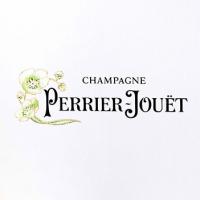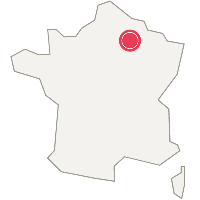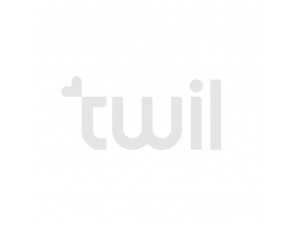You have no items in your shopping cart.
Champagne
Perrier-Jouët
(5 customer reviews)
"Floral, racy and chiseled" is the Perrier-Jouët signature. Its champagne has graced the courts of England and France, and is renowned the world over. Associated with master glassmaker Émile Gallé, its famous bottle dedicated to its "Belle Époque" cuvée has enjoyed undiminished success since the late 1960s. Find out more
 Recommended by
Recommended byParker Wine Advocate - Jancis Robinson - Wine Spectator
-

Shipped in
secured packaging - -20%
-

Garantie anti-casse :
Prise en charge totale
The winemaker
The Perrier-Jouët wedding
The maison Perrier-Jouët was born following the union of Pierre-Nicolas Perrier and Rose-Adélaïde Jouët, in 1811. The house's address is apt, as it is located on the Avenue de Champagne in Épernay. The company's success was rapid, and by 1815 the first bottles of champagne were being exported to the UK. It wasn't until 1837 that Perrier-Jouët conquered the United States. Today, the French brand shines all over the world.
In 1854, Charles Perrier succeeds his parents. He extends the vineyard into the best champagne crus, such as Aÿ, Mailly-Champagne, and especially Avize and Cramant. He consolidates the export division, notably to Great Britain. In 1861, the company became the official supplier to Queen Victoria and the English Court. Only a few years later did it become the equivalent to the French court.
When Charles died in 1878, his nephews by marriage, Henri and Octave Gallice, took over. It's the Belle Époque, and champagne is flowing freely in wealthy circles. Henri stays in Épernay to run the house, while Octave takes advantage of the cultural and artistic effervescence to develop sales in Paris.
This is how he met Émile Gallé, a talented and renowned master glassmaker, cabinetmaker and ceramist. A pioneer in his art, he became a leader of the Art Nouveau movement, which overturned the artistic practices of the time. A botanical enthusiast, Émile Gallé designed a swirl of Japanese anemones for his new friend Octave, to be used to decorate the magnums emblematic of the cuvée Belle Époque. Their collaboration didn't end there, as the design eventually became the emblem of the Perrier-Jouët house. In 1959, Perrier-Jouët was acquired by the Champagne house G.H. Mumm. The bottle designed by Émile Gallé was revived and relaunched in 1969, with the creation of the cuvée prestige "Belle Époque", which dates back to 1964. This cuvée, which the Americans for a time renamed "Fleur de Champagne", was a huge success worldwide.
Perrier-Jouët imposes unfailing standards to always produce the best champagne. If the year's vendanges are not of sufficiently high quality, no compromises are made, and the house simply refuses to produce anything at all. Since 1993, Hervé Deschamps has become Maison Perrier-Jouët's seventh Chef de Caves. He was his predecessor's assistant for the last ten years of his career. As such, he knows all the subtleties of the house and carries on the Perrier-Jouët heritage, meticulously chiseling each assemblage.
Hervé Deschamps works by the tank, plot by plot. With the aim of creating a unique wine every year, he tests and tastes tirelessly, until he is totally satisfied. "I launch into my blending project all at once, like the artist's creative jet where intuition, sensitivity and know-how meet without you being able to say how..." Hervé Deschamps.
The Perrier-Jouët vineyard
The Perrier-Jouët house owns 65 hectares that are exclusively classified as Grands Crus (at 99.2%!). The brand shows a predilection for chardonnay, which accounts for two-thirds of its vineyard estate, with 40 hectares. They are mainly located in Cramant and Avize. The predominance of chardonnay amplifies the floral richness of the champagne produced by the house, which has had only seven Chefs de Cave since it was founded in 1811, guaranteeing consistency and stability in the house's production.
Perrier-Jouët has never ceased to enrich its land holdings, which began to be built up in the early 18th century. The acquisition of two illustrious estates, the Bourrons Leroy and Bourrons du Midi, in the first half of the twentieth century added panache to an already high-quality vineyard.
The 5 founding crus of Perrier-Jouët
Perrier-Jouët champagne is made from complex blends, but 5 crus dominate and form the backbone of the house's entire production: Cramant and Avize (Côte des Blancs), Mailly (Montagne de Reims), Aÿ and Dizy (Vallée de la Marne). Perrier-Jouët owns some of the best parcels in the terroir. They are planted mid-slope and face South/South-East, as this is the ideal angle for Chardonnay to reach maturity possessing all its gustatory qualities, where white flowers dominate.
The pinots noirs on the Mailly grand cru bring freshness and delicacy to the champagne, while the pinots noirs from Aÿ are selected for their elegance and fresh fruit notes.
Finally, pinots meuniers complete the blend, bringing roundness and generosity.
The Belle Époque 2008 cuvée
If we had to mention just one champagne from the Perrier-Jouët house, it would have to be the cuvée Belle Époque, as it is the spearhead of the brand. The 2008 cuvée is, like all the other Belle Époque cuvées, crafted with the utmost care. 2008 was marked by a cool spring, a rainy start to summer and a superb September. For this capricious year, cellar master Hervé Deschamps had to work with grapes from harvests whose grapes brought a particularly round, yet refreshing mouthfeel.
The Belle Époque 2008 cuvée is a blend made up of 50% Chardonnay from the Grands Crus of Cramant and Avize. Pinot Noirs from the Montagne de Reims, present at 45%, add delicate complexity. Thanks to them, the finesse of Chardonnays can be extended ad infinitum. The Pinots Meuniers from Dizy, although in the minority at just 5%, provide the best balance, thanks to their roundness.
The Belle Époque 2008 cuvée spends over six years in the Perrier-Jouët cellars to offer its best. Served between 10 and 12°, it will delight you as an aperitif, but also at the table, alongside fish and shellfish, or white meats.

11 wines available
between 49.5 € and 1245 €
between 49.5 € and 1245 €

110 wine's scans
on Twil application
on Twil application
You might like Voir tous les vins de la région
- -26%
- -27%
- -26%

























 TWIL - Achat de Vin
TWIL - Achat de Vin


